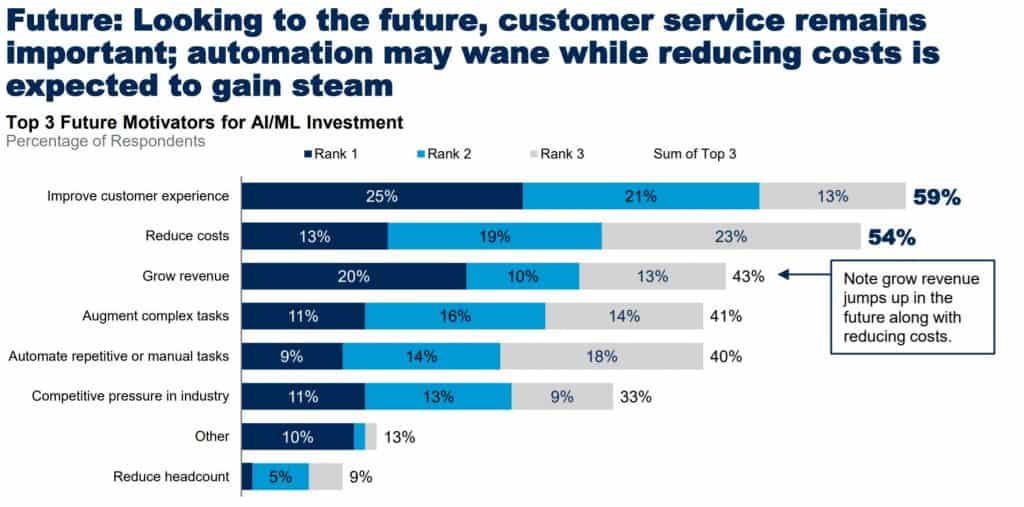
For business leaders, the motivators for AI are improving customer experience, reducing costs, growing revenue, and augmenting complex tasks.
The deployment of artificial intelligence in the workplace has staggered, according to Gartner, with companies struggling to find a use for the technology and employ workers with the right skill-set.
In an online webinar, vice president and distinguished analyst at Gartner Research, Whit Andrews, said that 77 percent of CIOs surveyed look to deploy AI sometime in the next four years. However, looking at similar research conducted in 2017 and 2018, it appears a majority fail to deploy the AI or broaden the definition of AI to include more simplistic versions of automation.
SEE ALSO: GridGain Announces New Data Lake Accelerator
“Skills of staff is what people tell us is a profound challenge for them. They’re finding it difficult to develop and employ the technical skills, and to address this from a business prospective,” said Andrews. “What’s intriguing when you look at this from a business prospective is that people have trouble grasping what AI is useful for… and that is a reflection of the skill deficit.”

Most CIOs said staff skill shortages were what hampered AI deployment. Data scope and quality was cited as another headache for AI deployment, as poor or incomplete data leads to a non-accurate system.
Due to more better data quality, the retail and financial sectors have seen far more AI deployment. As the two sectors need to have accurate and real-time data on customers, it provides the AI with a broader scope, allowing it to be more useful. “They have the skills in place and the necessity to improve customer service,” said Andrews.
When deploying AI into the workplace, Andrews suggested companies set up a center of excellence (CoE) or combine the AI with an existing CoE. Through this, companies should have more understanding of where to use AI and what material benefit it will provide. He also said that companies should look to augment workers, not replace them.
Gartner found that most workers want AI to make their job easier, by reducing mistakes, finding information, and helping with routine work. Interestingly, more workers aged 18 to 24 years old saw AI as a tool to support creativity, while older workers looked at it more as a tool for productivity improvement. Only seven percent of people surveyed said AI would not make their job easier.
Speaking of the ethical issues regarding AI, Andrews showed that 53 percent think it will create an unequal society and 75 percent think it will reduce jobs. However, only 1 in 8 of those that have seen AI in work think it will remove jobs, although that could be skewered towards tech-friendly workers, who may not see their job in as much threat as a shop floor worker.

For business leaders, the future motivators for AI are, in order of prevalence, improving customer experience, reducing costs, growing revenue, and augmenting complex tasks. Less than 10 percent surveyed said reducing headcount was one of the main motivators for AI deployment.
When looking at AI for consumers, the majority want AI to help, but do not want it to make decisions. “I don’t want it to go out and buy me toothpaste, but I would like it to tell me when I need more,” said Andrews. “I would love an AI that told me when I need to get my oil changed.”
This distinction is clear from Gartner’s survey on what consumers would like AI to do for them. Most mentioned things like suggesting driving routes, choosing food options, monitoring health and home security.
From another survey, it is clear also that people want barriers between interaction with AI. While more than 70 percent were comfortable with AI checking vital signs and authenticating through voice and face recognition, less than 55 percent were comfortable with AI detecting human emotions, and 37 percent were comfortable with an AI listening to conversations not involving it.
That last part is pertinent given the recent news that the Amazon Echo, alongside other smart home devices, regularly listen in on background conversations and store them in the cloud.






